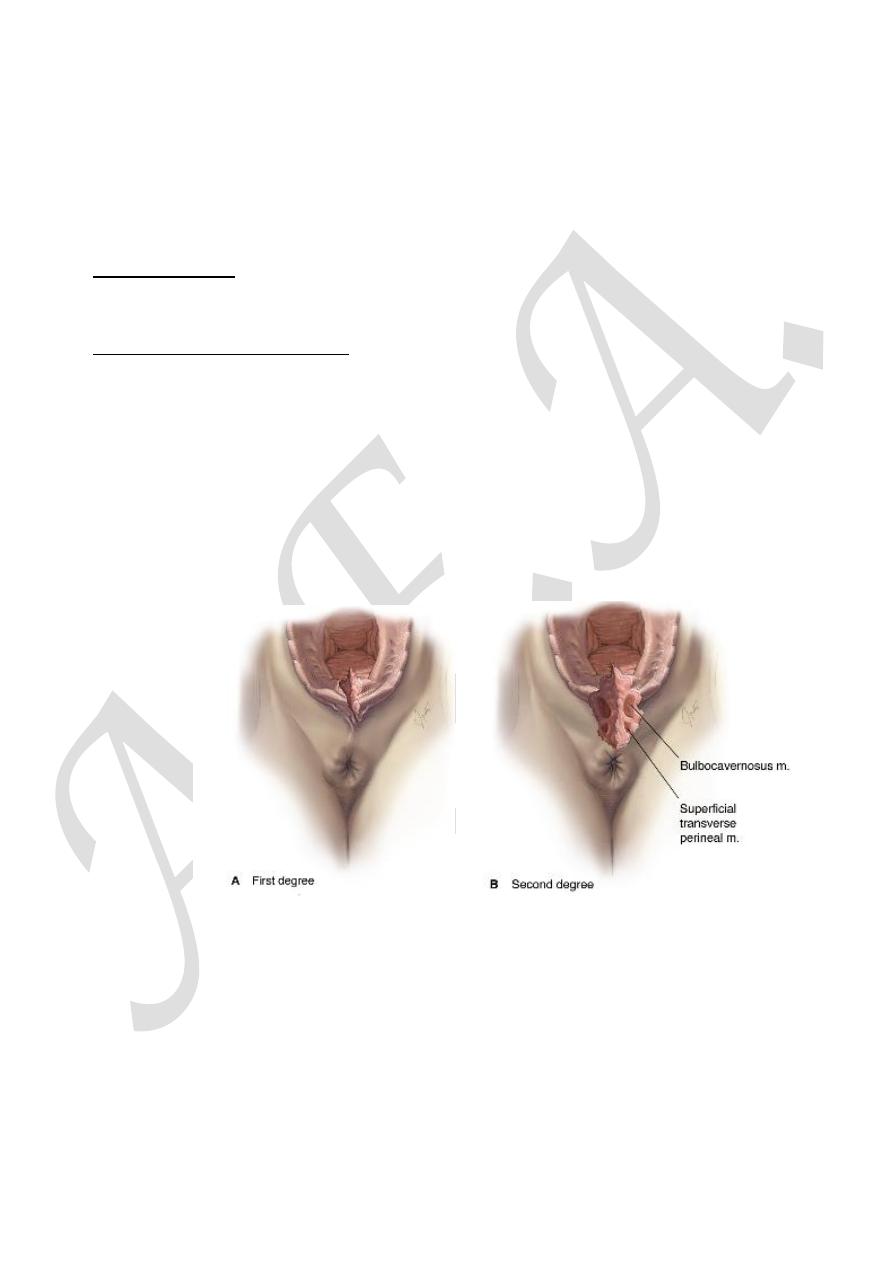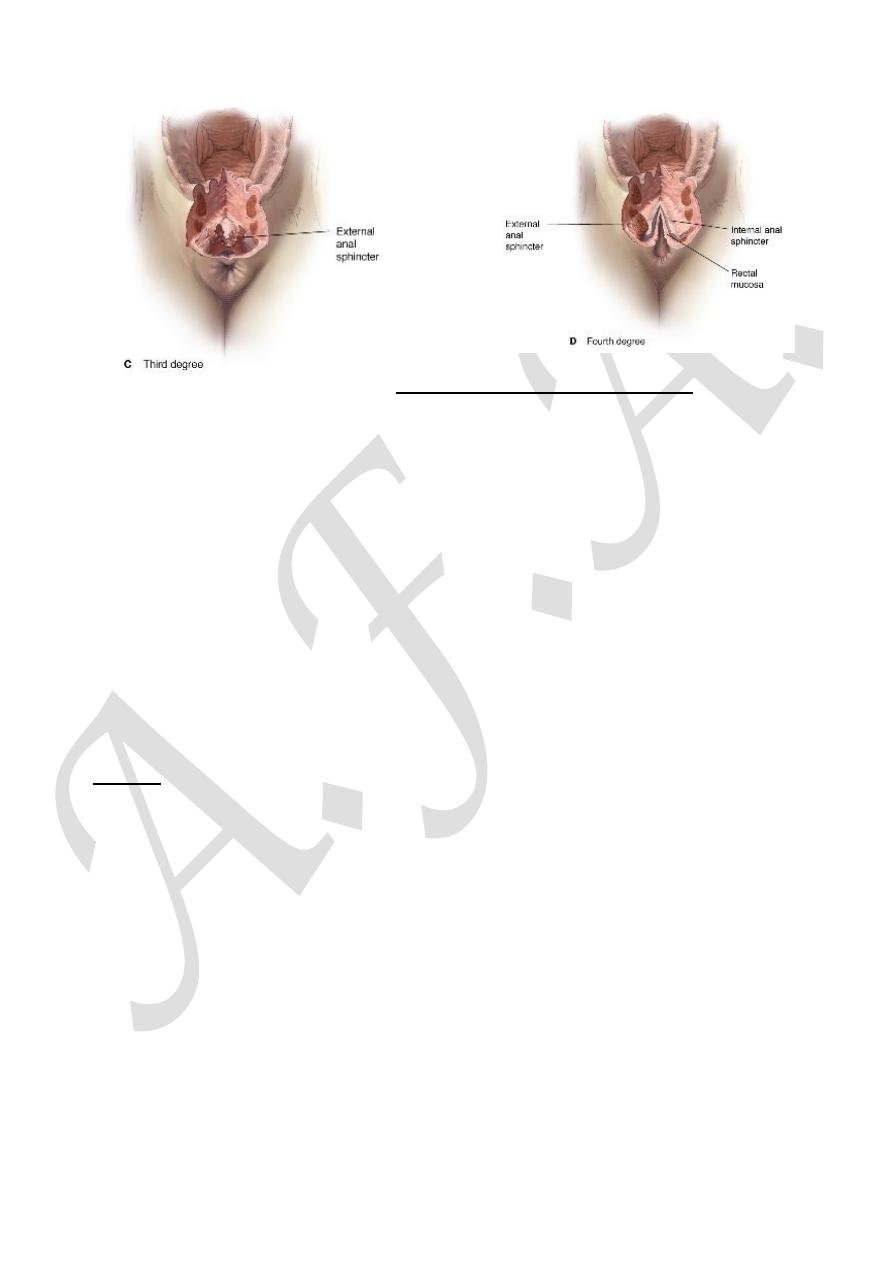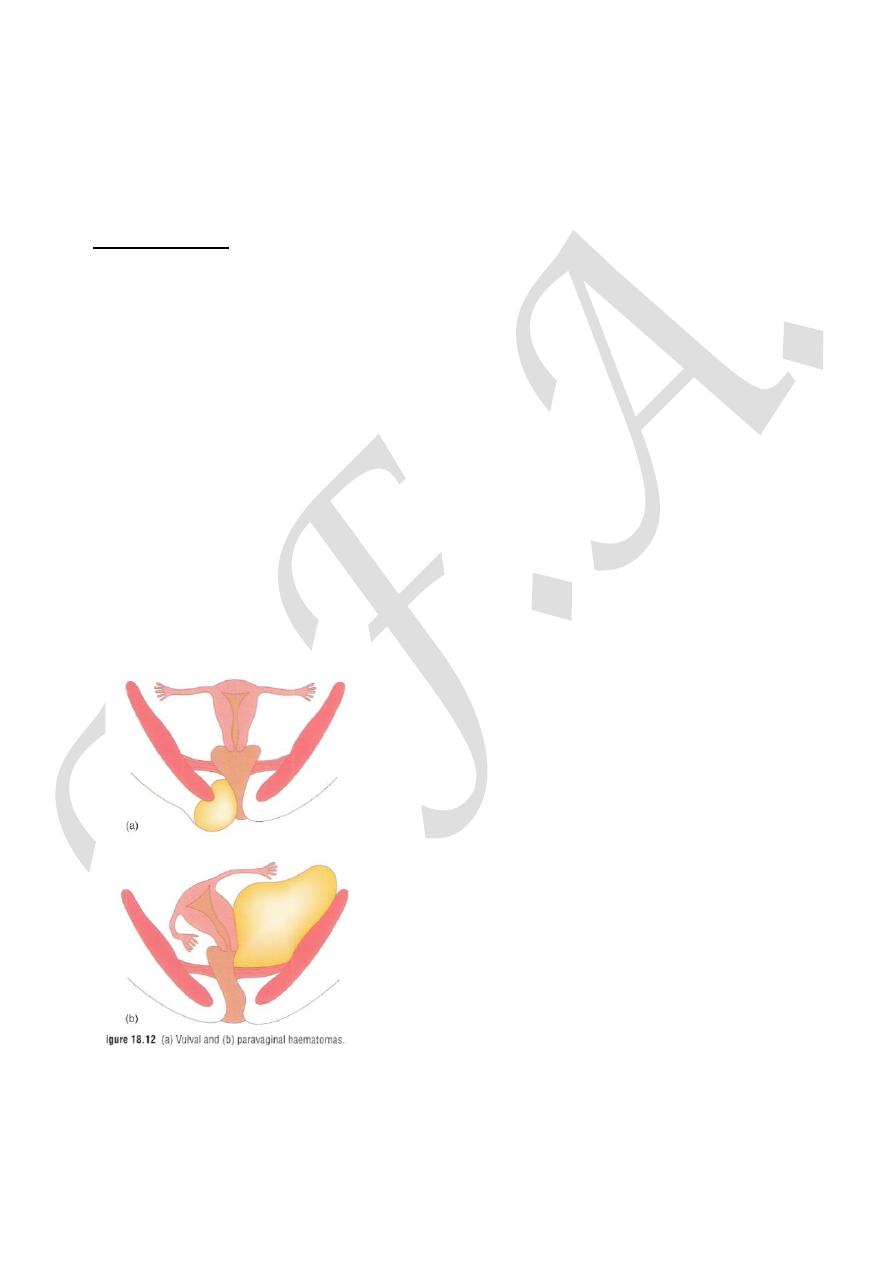
1
year
th
4
Dr.Manal Madany
Senior lecturer
2015-2016
Maternal injuries
:
Perineal injury
Perineal trauma is common, affecting up to 90% of primigravida.
Definition of perineal injuries:
First degree: involoves skin only.
Second degree: involves perineal muscles, includes episiotomy.
Third degree: second degree with disruption of the anal sphincter, subdivided into:
*3a: less than 50% of external sphincter thickness torn.
*3b: more than 50% of external sphincter thickness torn.
*3c: internal anal sphincter also torn.
Fourth degree: third degree tear with torn anal epithelium.

2
Risk factors for perineal trauma:
1. primigravida
2. Second stage of labour more than 60 minutes
3. Instrumental vaginal delivery
4. Midline episiotomy
5. Macrosomia
6. Fetal malposition
7. Epidural anaesthesia
8. Shoulder dystocia
Repair:
1. Identification of the extent of damage to the perineum, vagina and rectum with
adequate lighting and analgesia.
2. Technique of repair: some first-degree tears that are not bleeding will not require
suturing. A loose continuous suture technique to oppose each layer (vaginal
epithelium, perineal muscle and skin) is associated with less pain.
Repair of anal sphincter requires adequate muscle relaxation with regional or
general anaesthesia.
3. Postoperative precautions:
Prophylactic antibiotics as cephalosporines and metronidazole, analgesics as
NSAID, paracetamol and opiod analgesia
degree tear)
rd
10 days (3
-
stool softening like lactulose for 5

3
advise on perineal hygiene and pelvic floor exercise
urethral catheter may be indicated to avoid urinary retention
omplications:
C
1. Infection
2. Bleeding
3. Missing the apex of the tear may cause haematoma
4. Deep sutures into the rectum could lead to fistula formation
5. Improper suturing could lead to later pain and dyspareunia
degree tears could lead to anal incontinence
th
and 4
rd
6.3
Haematoma:
Haematomas are divided into those that lie above and those that lie below the
levator muscle.
Infralevator h. includes those of the vulva, perineum, paravaginal and ischiorectal
fossa. Supralevator h. spread to the broad ligament and
retroperitoneal space
.

4
:
ncidence
I
the incidence of haematomas more than 4 cm in diameter is approximately 1:1000
deliveries.
Aetiological factors:
1. Episiotomy (85-90 %)
2. Instrumental vaginal deliveries.
3. Primiparity.
4. Hypertensive disorders.
5. Other factors like: multiple pregnancy, vulval varicosities, macrosomic baby,
prolonged second stage of labour.
:
Presenting symptoms
Infralevator haematomas
1. May be asymptomatic until shock develops
2. Vaginal swelling
3. continued vaginal bleeding
4. Severe vaginal / rectal pain
5. Urinary retention
Supralevator haematomas
1. Cardiovascular collapse
2. Uterine displacement
3. Abdominal or rectal pain
4. continued vaginal bleeding

5
Management:
1. Resuscitation measures
2. Haematomas less than 5 cm in diameter and not expanding:
Observation using ice-packs and pressure dressings to limit its expansion,
analgesia and markings should be made on the skin to establish whether the
margins are expanding
3. Haematomas more than 5 cm in diameter and are expanding:
Surgical drainage with ligation of bleeding vessels, leave the wound open with a
drain
4. Broad ligament haematomas are usually managed conservatively, if it is not
possible to maintain a stable hemodynamic state, surgical exploration is
recommended and a hysterectomy may be indicated.
5. Postoperative precautions (as in perineal trauma)
Injuries to the cervix:
After vaginal delivery, cervical lacerations are extremely common, bleeding that is
not from the vagina and continues despite a contracted uterus is an indication to
examine the cervix.
pair it.
, recognition of the injury and re
measures
: Resuscitation
Management
Repair: good visibility using right-angle retractors is essential. Using two pairs of
ring forceps applied to the cervix to inspect the whole circumference accurately.
Identify the apex of the tear and suture it.
Caesarean hysterectomy:
The risk is increased with caesarean delivery, previous caesarean section, placenta
previa, placenta accreta and uterine atony when the conservative medical and
surgical measures have been unsuccessful. The maternal mortality and morbidity is
high with this surgery.
